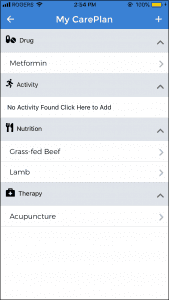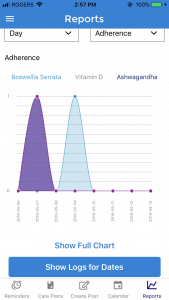
As most people call it, heightened blood pressure is commonly known as hypertension. Blood pressure, by definition, is the amount of force by the blood against the arterial walls as the heart pumps blood throughout the entire body. Hypertension happens when this particular force of the blood is stronger than what is normal.
What is primary hypertension?
In the world, most cases of high blood pressure are categorized as essential hypertension. This means that there is no known cause as to why it occurs. Usually, there are no symptoms making it difficult to check. Millions of people that have essential hypertension do not realize this condition until it is worst already. That is why knowing its risk factors is important so as to rule it out from other diseases.
Risk factors worth knowing
In the past, experts believe that genetic factors are the main players in developing essential hypertension. Aside from genetics, stress also adds on to the gravity of the disease. Having a sedentary lifestyle also puts you at risk, as well as being overweight with a poor, unbalanced diet (usually a high-sodium diet).
According to the doctors, people who suspect or have a family history of essential hypertension must make major changes in their lifestyles and diet. Otherwise, maintenance medication may be prescribed to help control the condition effectively.
Smoking is also one of the activities that put you on the risk of acquiring such a condition. Excessive alcohol intake will also make your health status worse.

Easily add different modalities such as Drugs, Activity, Nutrition and Therapies that will help you feel better.
There are also risk factors in which no one can be blamed for as it is intrinsic. Age is one of the factors affecting essential hypertension in which no one can get away with. Those already on the age of 45 and above are at higher risk. When a person reaches 65 and about, he or she is already at risk for developing stage 2 hypertension.
Another risk factor is ethnicity. African Americans have the highest risk of having essential hypertension. There is no clear explanation as to how this occurs but it holds true worldwide. Experts suggest that it may be due to some environmental factors such as genetics, lifestyle or eating habits. Male and female African Americans are both high at risk as compared to the rest of the population in the world.
Gender also plays a huge role in being susceptible to essential hypertension. Though the studies do not clearly rule this factor out, it has been observed that men tend to have a positive diagnosis before reaching 50 years of age. They are also more likely to develop related complications such as kidney disease in the future. Women, on the other hand, are prone to have essential hypertension after 55 years of age.
Another thing to watch out for is your family history. Like many diseases, people whose family have a history of essential hypertension are at risk of developing it themselves. All of these risk factors are clearly beyond anyone’s control. That is why it is crucial to have enough knowledge of your inherent risk. Prevention is better than cure so make sure to research and stick to a healthier lifestyle.
Other types of hypertension
Secondary hypertension – high blood pressure caused by another predisposing condition
Malignant hypertension – this has obvious and noticeable symptoms (angina pectoris or chest pain, nausea, and headaches)
Resistant hypertension – a form that cannot be reversed through lifestyle changes and medication intake, usually due to an underlying cause
Pulmonary hypertension – this pertains specifically to the arteries on the right side of your heart and lungs
Orthostatic hypertension – this is a sudden increase in blood pressure caused by standing up from a sitting or lying down position
As mentioned above, there is a malignant form of hypertension which deals with clear symptoms, but that does not mean there is a benign type. Essential hypertension may be void of symptoms for some patients, yet it still carries the risk of major cardiovascular diseases such as heart attack, stroke, and related conditions. A “Silent Killer”, essential hypertension will never be benign, that is why those who are at risk must have their blood pressure taken regularly.
Free apps such as CareClinic is a perfect tool in managing essential hypertension. This can be downloaded to your iOS and Android smartphone for easy access. One of its features, the blood pressure tracker, records results into the app. This is then plotted in a graph so that at the end of the month, you already have a report to show your progress over time. Aside from that, medication reminders help you adhere to prescribed drugs with the right dosage and schedule.
Hypertension classification changes
The American Heart Association recently changed its guidelines and even decreased the threshold for hypertension. Blood pressure levels are as follows:
Normal BP: Less than 120/80 mmHg
Elevated BP: Systolic between 120-129 and diastolic less than 80 mmHg
Stage 1 hypertension: Systolic between 130-139 or diastolic between 80-89 mmHg
Stage 2 hypertension: Systolic at least 140 or diastolic at least 90 mmHg
With the recent changes, reports showed that around 31 million people in the United States are living with stage 1 hypertension. The change has a greater impact on the younger generation. Yet on a positive note, stage 1 essential hypertension often does not require medication. It only takes a few tweaks on the lifestyle to keep your blood pressure from reaching the riskier levels. Living with a healthy and active lifestyle is key to a healthy heart.
Systolic and Diastolic BP: Both matter
The numbers you see on your blood pressure tracker journal are equally important. As defined, systole is the maximum amount of pressure your heart exerts when it beats, while diastole is the pressure exerted between heartbeats. So either way, both numbers you see have a significant role in your cardiovascular system.
That is why it is very important to track your blood pressure because almost half of those with essential hypertension remain unaware of their condition. One of the life-threatening events with regards to blood pressure is a stroke or heart attack. It is the very first sign of this condition and not monitoring blood pressures may result in this.
So aside from lifestyle and diet change, be sure to track your BP using CareClinic to avoid such complications. There are an estimated 10 million preventable hypertension-related deaths in the world annually. These deaths could easily be avoided with a simple treatment plan.
Diagnostics
When you suspect that you may be at risk for essential hypertension, visit your doctor and have a thorough check-up. The doctor may do a physical examination as well as some tests (to check for heart and kidney problems) such as:
- Cholesterol test. Also called a lipid profile in other clinics.
- Echocardiogram. This examination uses sound waves to make a photo of your heart.
- Electrocardiogram (EKG or ECG). An EKG records the electrical activity of your heart.
- Kidney and other organ function tests. These can include blood tests, urine examinations or ultrasound tests to check the organs if they are functioning properly.
Take your BP regularly
As noticed, the only time people get their blood pressure levels is when they become ill. That should not be the case if ever you have a family history of this condition. Monitoring blood pressure levels help rule out and even prevent any condition from worsening.
A sphygmomanometer is an easy apparatus to use when monitoring BP. This test is also cheap and would only take a matter of minutes of your time. According to medical experts, it is highly suggested that each adult must have their blood pressure measured at least once in five years. As you grow older, it should be done more frequently especially if you are at high risk for essential hypertension.
Taking your blood pressure does not have to be done only at the clinic or hospital. Have it done at home for proper monitoring.
What medications are effective?
While having a healthy lifestyle is one of the best things to do, there are individuals who need to take medications such as beta blockers. These drugs may also be taken in conjunction with ACE inhibitors (angiotensin-converting enzyme), diuretics and other types depending on the need of the patient. Here is a list of the most prescribed drugs by cardiologists:
- Beta blockers such as metoprolol (Lopressor)
- Diuretics which include hydrochlorothiazide (Microzide)
- Renin inhibitors, aliskiren (Tekturna)
- Calcium channel blockers such as amlodipine (Norvasc)
- Angiotensin-converting enzyme or ACE inhibitors, such as captopril (Capoten)
- angiotensin II receptor blockers (ARBs) include losartan (Cozaar
Given these different treatment options and medications, each diagnosis is unique but the willingness of the patient to change such lifestyle and help manage symptoms often result in a better prognosis. Studies have shown that treatment to reduce blood pressure, combined with broader cardiovascular therapy, reduces the risk of heart attack by around 20-25%, stroke by 35-40%, and heart failure by 50%.
So, even if you have everything you need, if you don’t adhere to any treatment therapy strictly, your life will certainly be at risk. To aid you on this journey, CareClinic has the best features that help track your blood pressure, as well as send medication reminders once diagnosed. It’s easy to get started, click here to register, it’s free.



